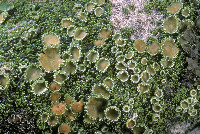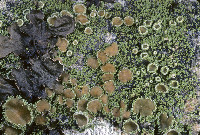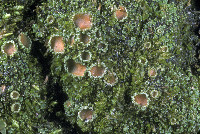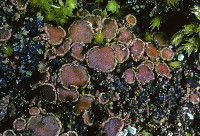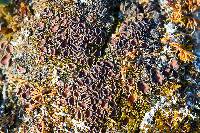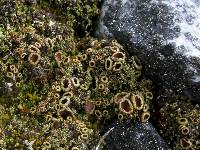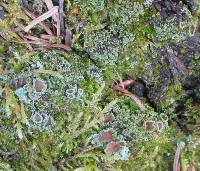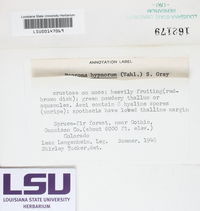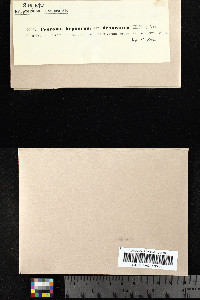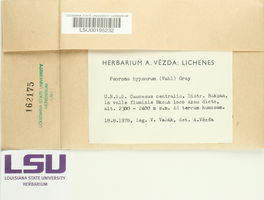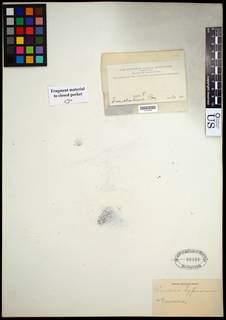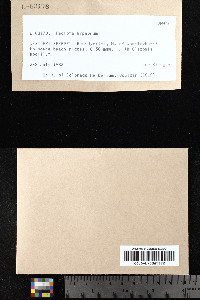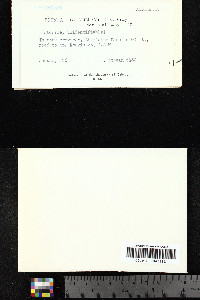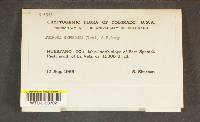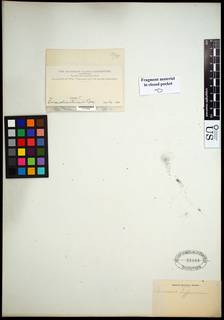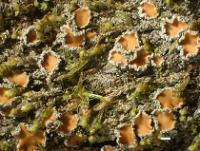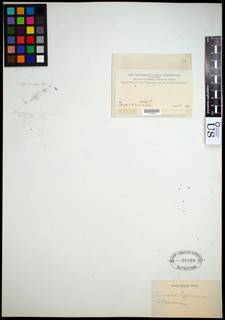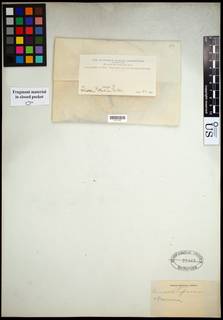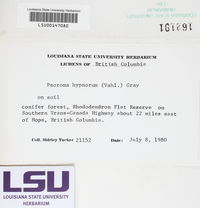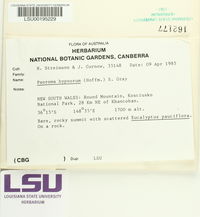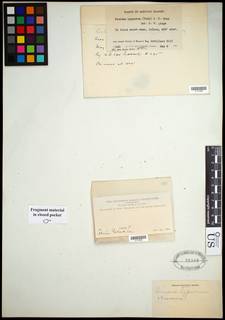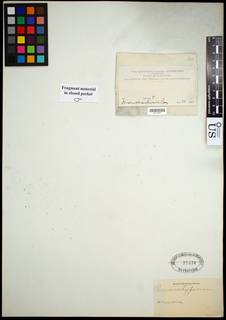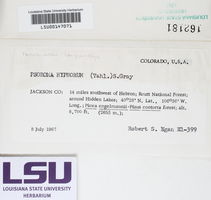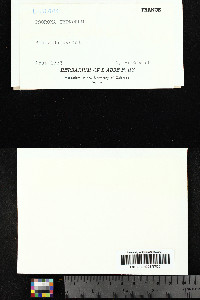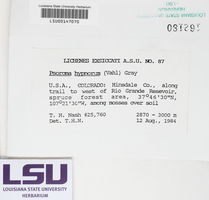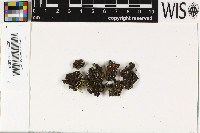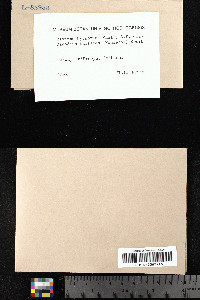
Consortium of Lichen Herbaria
- building a Global Consortium of Bryophytes and Lichens as keystones of cryptobiotic communities -
- Home
- Search
- Images
- Species Checklists
- US States: O-Z >
- US National Parks
- Central America
- South America
- US National Parks
- Southern Subpolar Region
|
|
|
|
Family: Pannariaceae
[Amphiloma hypnorum (Vahl) Nägeli, moreCourtoisia hypnorum (Vahl) L. Marchand, Lecanora hypnorum (Vahl) Ach., Lecanora hypnorum f. hypnorum (Vahl) Ach., Lichen hypnorum Vahl, Pannaria hypnorum (Vahl) Körb., Pannaria hypnorum f. hypnorum (Vahl) Körb., Pannaria hypnorum var. hypnorum (Vahl) Körb., Parmelia hypnorum (Vahl) Ach., Patellaria hypnorum (Vahl) DC., Squamaria hypnorum (Vahl) Hook., Trachyderma hypnorum (Vahl) Norman, Zeora hypnorum (Vahl) Flot.] |
Nash, T.H., Ryan, B.D., Gries, C., Bungartz, F., (eds.) 2002. Lichen Flora of the Greater Sonoran Desert Region. Vol 1. Thallus: squamulose, irregularly spreading over the substrate squamules: small, 0.2-0.5 mm diam., sometimes almost granular; with interspersed darker (bluish), more granular squamules (containing Nostoc, i.e. the cephalodia) upper surface: mat gray to green-gray to yellow-brown when dry, bright green when wet (due to the green photobiont) upper cortex: paraplectenchymatous, 30-40 µm thick medulla: composed of loosely reticulate hyphae cephalodia: frequent but sometimes few and inconspicuous, similar to thallus squamules or smooth, rounded, pale red-brown or bluish brown, scattered among the squamules or on the outher margin lower cortex: paraplectenchymatous, 30-40 µm thick Apothecia: frequent, usually large, up to 5 mm wide; disc: red-brown to dark brown, often concave; thalline margin: usually irregularly squamulose, 100-200 µm thick, rarely smooth, underside often with short, pale hairs; exciple: poorly developed, subparaplectenchymatous, 20-25 µm thick; hymenium: hyaline but brown above, I+ dark blue, 100-120 µm high; paraphyses: up to 4.5 µm wide, submoniliform, apices short-celled asci: each with an internal apical amyloid tubes, clavate to subcylindrical, 70-90 x 11-15 µm, 8-spored ascospores: simple, colorless, ellipsoid to narrowly ellipsoid, with an apiculus at one or both ends, with prominent, warted-ridged epispore, 20-34 x 8-12 µm (with epispore, otherwise 19-28 x 8-10 µm) Pycnidia: 0.1-0.2 mm diam., hyaline or pale brown conidia: bacilliform, 5-6 x 1-2 µm Spot tests: all negative Secondary metabolites: none detected. Substrate and ecology: moist habitats, among bryophytes or on soil, mostly in montane regions, particularly in spruce-fir forests World distribution: bipolar in cool-temperate and arctic-alpine regions of both hemispheres Sonoran distribution: common in the high mountains of Arizona, most frequent above 3000 m. Notes: If not checked when moist, it is often unneccesarily confused with Protopannaria pezizoides. Some material from Arizona has unusually large, greenish squamules and flat, dark brown apothecia. They have, however, spores and chemistry typical of the species and are regarded as being within its range of variation. |
|
|
|
Powered by Symbiota



